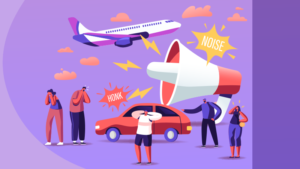
Do ‘sounds of silence’ even exist?
Shhh! Can you hear the sounds of silence? Unless you’re wearing noise-cancelling headphones or canoeing on Ecuador’s Zabalo River where silence is protected, chances are you are living in noise pollution.
When the city-life sounds such as traffic, construction and planes surpass ambient noise levels, it has a harmful impact on humans and animals. Considered to be a form of human-generated environmental degradation, the World Health Organization has classified noise pollution as the second largest environmental cause of health problems (air pollution is the first), which include cognitive impairment in both adults and children, sleep disorders, hypertension, cardiovascular disease and premature death. National Geographic reports that noise pollution threatens the survival of over 100 animal species living on land and in water.
Doctors and researchers alike are not turning a deaf ear to this ever-growing problem. Policymakers are using urban-area interactive sound maps to make noise-related decisions and states are initiating sound control regulations. Unlike toxic pollution that can take years to clear, noise pollution can be reduced if people and machines just quiet down. Ecuador took the task to heart and became the world’s first to build a “quiet park,” a lush million acres that straddle the Zabalo River where silence is golden and revered like a natural resource. Sounds heavenly, doesn’t it?
ARTICLE: NATIONAL GEOGRAPHIC TALKS NOISE POLLUTION
